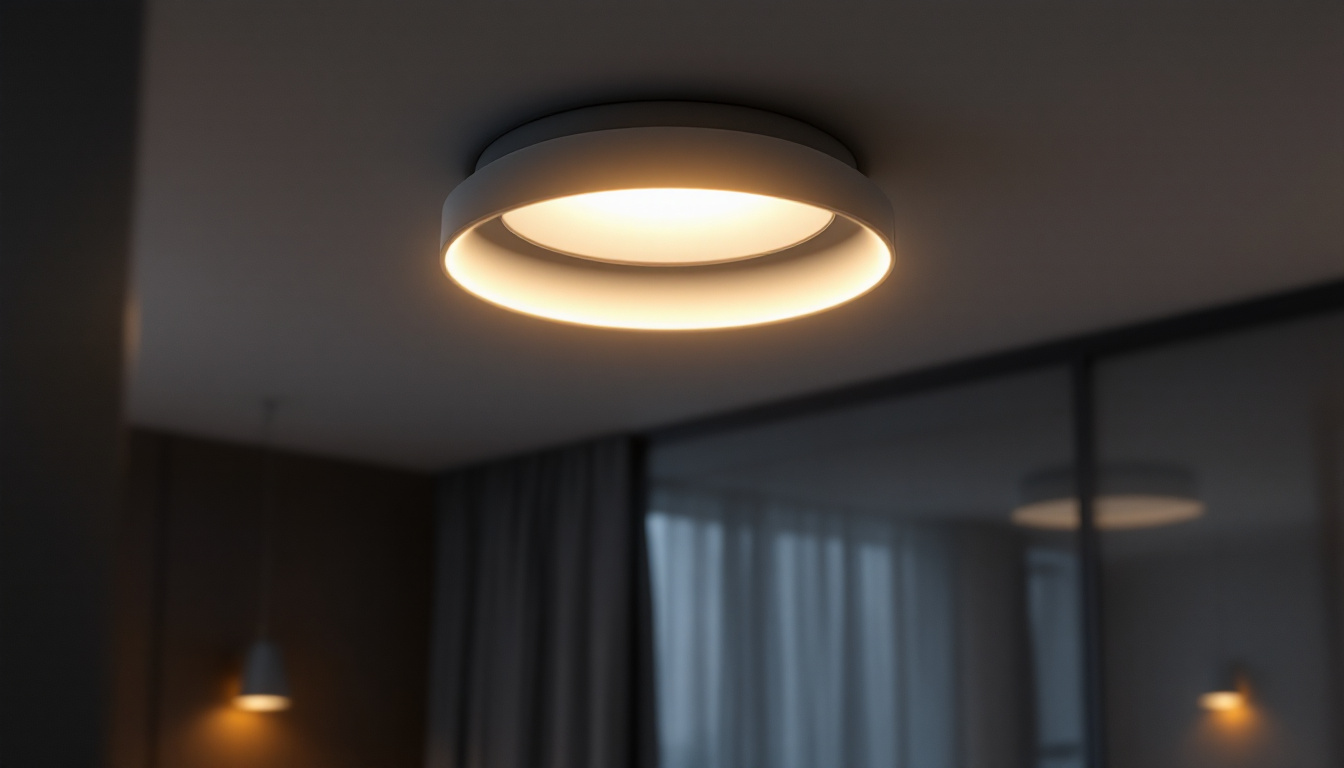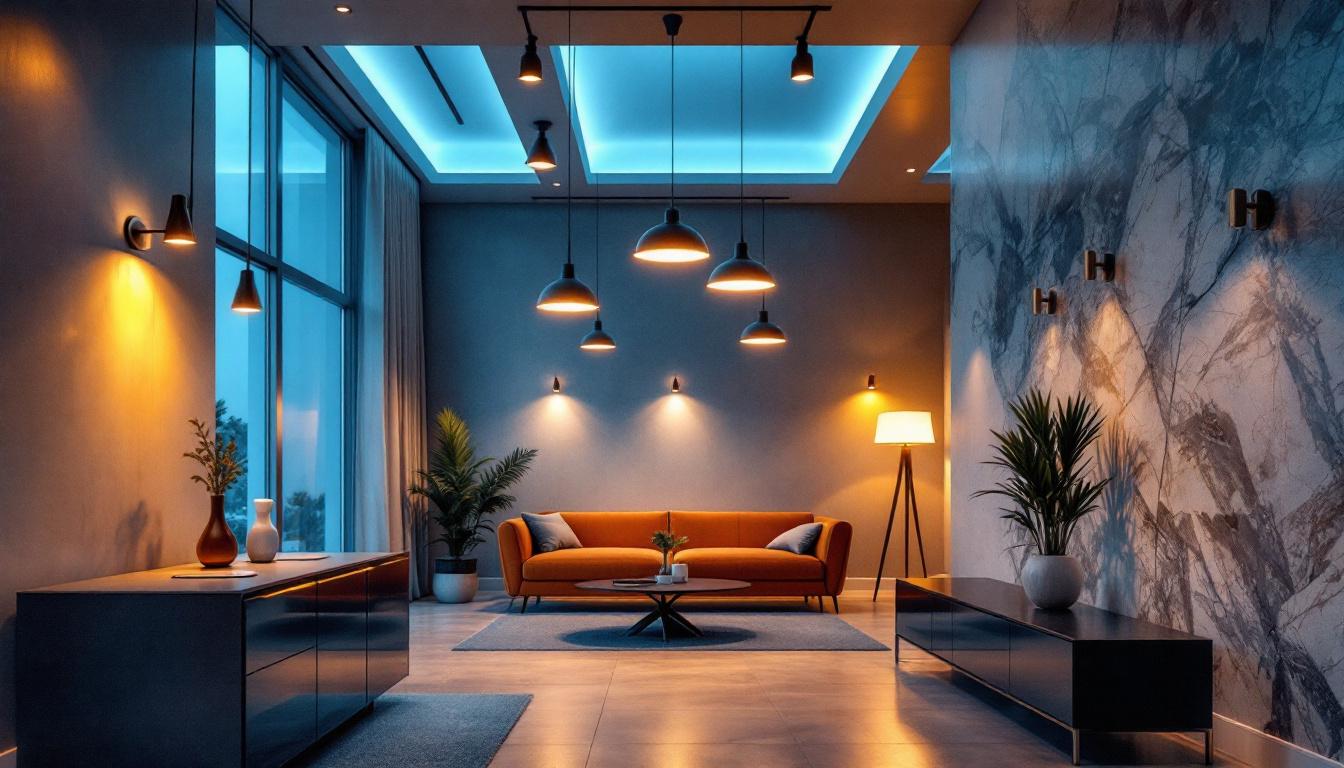
Motion detector lights are an essential component of outdoor lighting systems, designed to enhance security and safety in residential and commercial spaces. These lights utilize advanced technology to detect movement within a specified range, automatically turning on when someone approaches. This feature not only provides illumination but also serves as a deterrent against potential intruders. The presence of motion detector lights can significantly reduce the likelihood of theft or vandalism, as potential wrongdoers are less likely to target a well-lit area where they could be easily seen.
Typically equipped with passive infrared (PIR) sensors, these lights can sense changes in heat emitted by moving objects. When a person or animal enters the detection zone, the sensor activates the light, ensuring that the area is well-lit. This immediate response can significantly enhance safety, particularly in dark or secluded areas. Additionally, many modern motion detector lights come with adjustable sensitivity settings, allowing users to fine-tune the detection range and avoid false alarms triggered by pets or passing vehicles.
There are several types of motion detector lights available, each with unique features suited for different applications. The most common types include floodlights, wall-mounted fixtures, and integrated security systems. Floodlights are powerful and ideal for illuminating large areas, while wall-mounted fixtures are perfect for entryways and pathways. Integrated systems often combine motion detection with cameras, providing both light and surveillance capabilities. These advanced systems not only alert homeowners to movement but can also record footage for later review, enhancing overall security.
Understanding the specific needs of a project can help contractors choose the right type of motion detector light. Factors such as the size of the area, the level of security required, and the desired aesthetic all play a crucial role in the selection process. For instance, in a large backyard, a series of floodlights may be necessary to cover all angles, while a smaller front porch might only require a single wall-mounted fixture. Furthermore, energy efficiency is another consideration; many motion detector lights now come with LED options that consume less power while providing bright illumination, making them an environmentally friendly choice. With the right selection and installation, motion detector lights can enhance both the functionality and safety of any outdoor space.
Outdoor lighting is not merely a decorative element; it serves multiple critical functions. Primarily, it enhances safety by illuminating pathways, driveways, and entrances, reducing the risk of accidents. Well-lit areas discourage criminal activity, as potential intruders are less likely to approach a property that is visibly monitored. Additionally, proper outdoor lighting can help prevent falls and injuries, especially for elderly residents or guests who may have difficulty navigating in the dark. By ensuring that all entry points and walkways are adequately lit, homeowners can create a safer environment for everyone.
Moreover, outdoor lighting contributes to the overall ambiance of a property. It can highlight architectural features, create inviting outdoor spaces, and extend the usability of outdoor areas into the evening hours. For contractors, understanding the dual role of outdoor lighting can help in designing effective lighting installations that prioritize both safety and aesthetics. The strategic placement of lights can transform a garden into a magical retreat or a simple patio into a cozy gathering space, making outdoor areas more appealing for entertaining or relaxation. The right lighting can also enhance the natural beauty of landscaping, showcasing plants and trees in a way that changes the perception of the entire property after sunset.
The integration of motion detector lights into outdoor lighting systems offers numerous benefits. One of the most significant advantages is energy efficiency. These lights only activate when necessary, reducing electricity consumption compared to traditional lighting systems that remain on continuously. This not only leads to lower energy bills but also contributes to a more sustainable lifestyle, as homeowners can reduce their carbon footprint by minimizing unnecessary energy use.
Additionally, motion detector lights enhance security by providing immediate illumination when movement is detected. This sudden burst of light can startle intruders and draw attention to any suspicious activity. Furthermore, the presence of these lights can serve as a psychological deterrent, discouraging potential threats from approaching the property. In addition to their security benefits, many modern motion detector lights come equipped with adjustable sensitivity settings and timers, allowing homeowners to customize their lighting system to fit their specific needs. This flexibility ensures that the lights only activate when truly needed, further enhancing both security and energy efficiency. Moreover, some advanced models even offer smart technology integration, allowing users to control their outdoor lighting remotely via smartphone apps, providing an added layer of convenience and peace of mind.
When installing motion detector lights, several factors must be considered to ensure optimal performance. The placement of the sensors is crucial; they should be positioned to cover the most vulnerable areas of a property, such as entrances, driveways, and dark corners. Proper alignment and height can maximize the detection range and minimize false triggers from passing animals or moving foliage.
Additionally, contractors should consider the power source for the lights. Options include hardwired systems, which provide a reliable power supply, or solar-powered models, which offer flexibility and reduced installation complexity. Each option has its pros and cons, and the choice will depend on the specific requirements of the project.
The sensor range of motion detector lights varies significantly between models. Some lights are designed for short-range detection, suitable for small areas, while others offer extended ranges for larger properties. Understanding the specific needs of the installation site is essential for selecting the appropriate sensor range.
Contractors should also be aware of the detection angle, which determines how wide an area the sensor can cover. A wider angle can be beneficial for larger spaces, but it may also increase the likelihood of false triggers. Balancing coverage with sensitivity is key to achieving an effective lighting solution.
As technology advances, smart motion detector lights are becoming increasingly popular. These systems can be integrated with home automation platforms, allowing users to control their lighting remotely through smartphones or voice commands. This added level of control enhances security and convenience, making it easier for homeowners to manage their outdoor lighting.
Smart motion detector lights often come with features such as customizable settings, scheduling options, and real-time alerts. These capabilities enable users to tailor their lighting systems to their specific needs, ensuring that their properties remain secure at all times.
Motion detector lights can be effectively integrated with other security systems, such as alarms and surveillance cameras. This synergy creates a comprehensive security solution that enhances overall safety. For instance, when motion is detected, the lights can trigger an alarm or send notifications to the homeowner, providing immediate awareness of potential threats.
Moreover, integrating motion detector lights with cameras allows for better monitoring of outdoor spaces. When the lights activate, the cameras can start recording, ensuring that any suspicious activity is captured. This combination of lighting and surveillance serves as a powerful deterrent against criminal activity.
To ensure the longevity and effectiveness of motion detector lights, regular maintenance is essential. This includes cleaning the sensors to remove dirt and debris that may obstruct their function. Additionally, checking the alignment and positioning of the lights can help maintain optimal performance.
Contractors should also educate clients on common troubleshooting steps. For instance, if the lights are not activating as expected, it may be due to incorrect sensor placement or a need for battery replacement in solar-powered models. Providing clients with this knowledge can enhance their satisfaction and trust in the installation.
Several common issues may arise with motion detector lights, including false triggers and failure to activate. False triggers can occur due to environmental factors, such as moving branches or animals. Adjusting the sensitivity settings or repositioning the sensors can often resolve these issues.
On the other hand, if the lights fail to activate, it may indicate a power issue or a malfunctioning sensor. Regular checks on the power source and ensuring that the sensors are clean and unobstructed can help prevent these problems. Providing clients with clear instructions on how to address these issues can enhance their experience and confidence in the system.
Motion detector lights are a vital addition to outdoor lighting installations, significantly enhancing safety and security. Their ability to detect movement and provide immediate illumination makes them an effective deterrent against potential threats. By understanding the various types, benefits, and installation considerations, lighting contractors can design systems that meet the specific needs of their clients.
Furthermore, the integration of smart technology and other security systems can elevate the functionality of motion detector lights, providing homeowners with greater control and peace of mind. Regular maintenance and troubleshooting knowledge are essential for ensuring the longevity and effectiveness of these systems, ultimately leading to satisfied clients and successful projects.
As the demand for enhanced security solutions continues to grow, motion detector lights will remain a crucial element in outdoor lighting installations, providing both safety and convenience for homeowners and businesses alike.
Ready to enhance the safety and security of your outdoor lighting installations with motion detector lights? Look no further than LumenWholesale, where we provide contractors with the highest quality, spec-grade lighting products at unbeatable wholesale prices. Our extensive selection is designed to meet the most rigorous industry standards, ensuring you deliver reliable and high-performance lighting solutions to your clients. Plus, with free shipping on bulk orders, you can enjoy the best value without any hidden fees or compromises. Elevate your lighting projects today by visiting Wholesale Lighting at the Best Value and experience the LumenWholesale difference.

Discover how an outdoor work lamp can transform your lighting projects from ordinary to extraordinary.

Discover the insider tips and techniques lighting contractors use to master recessed can fixtures.

Discover how Porsche Light can maximize profitability in lighting installations with expert strategies, cost-saving tips, and industry insights—boost your ROI today!.

Discover how bollard lights can transform outdoor spaces while boosting profitability in lighting installations.